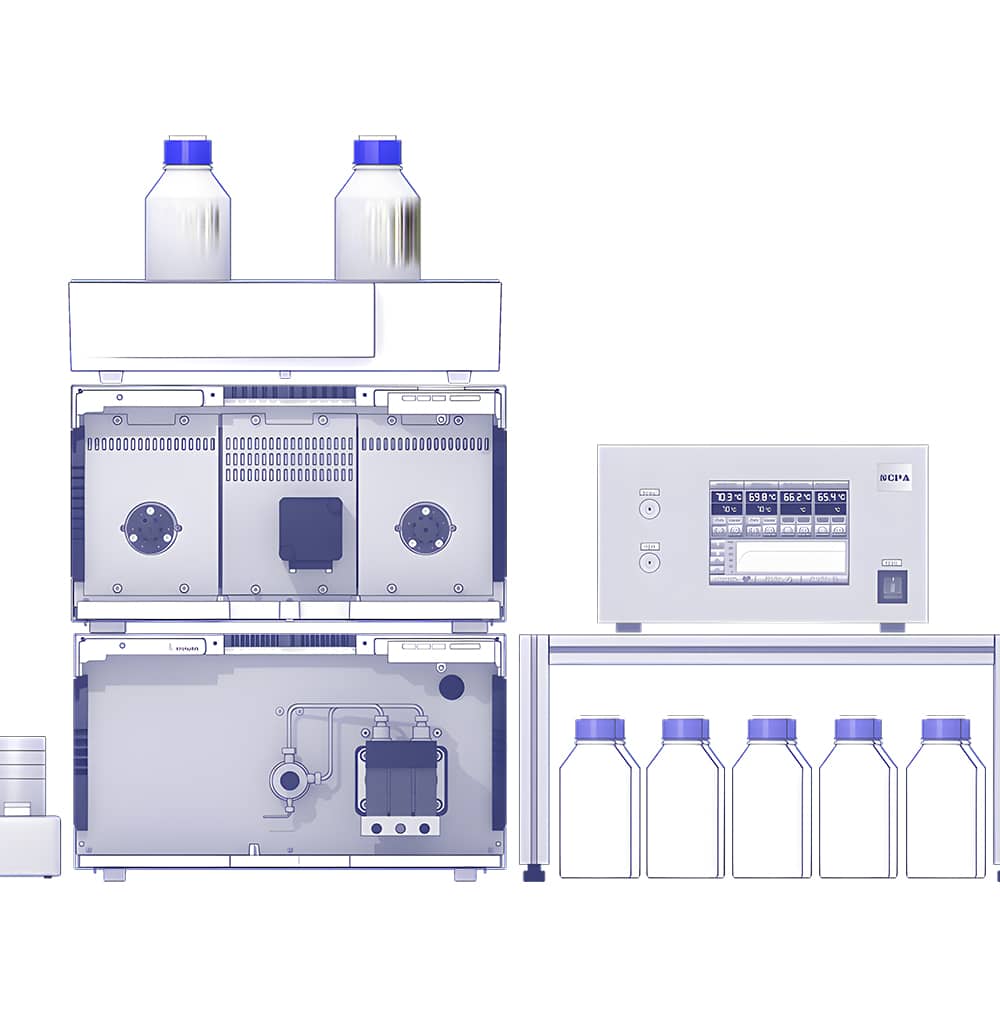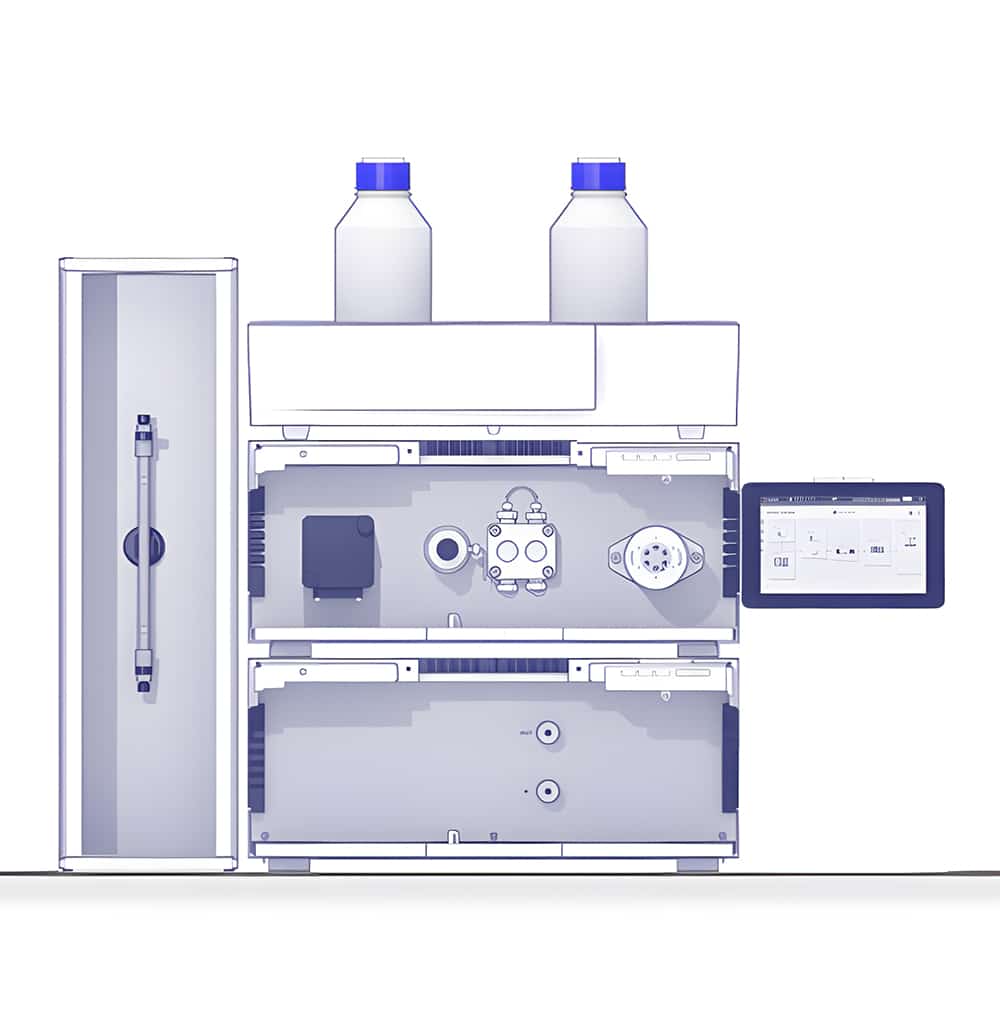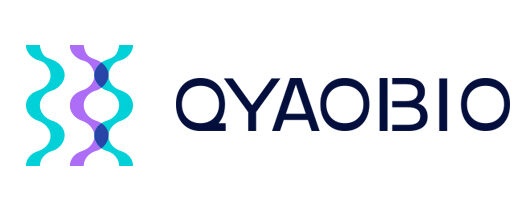Reversed Phase Liquid Chromatography
QYAOBIO provides reversed phase liquid chromatography purification for customers in worldwide
Reversed-phase Liquid chromatography (RP-LC) is also known as reversed phase HPLC (RP-HPLC), it is a liquid chromatography with non-polar stationary phase and polar mobile phases for the separation of organic compounds. In recent years, the vast majority of HPLC is Reversed Phase mode. In classic chromatography models, the stationary phase is polar, and the mobile phase is a non-polar organic solvent. This is known as normal phase chromatography.
Silica-based Stationary Phases
RPLC is a frequently analytical technology, there are various stationary phases in RPLC, this allows great flexibility in the separation methods. The chemical composition of base matrix is critical in RPLC, it must have both chemical and structural stability. Silica and synthetic polystyrene satisfy all these requirements.
The particle size of beads is depending on the specific requirements of separation, ligand selection is based on principle: the greater hydrophobicity of molecule, the less need for hydrophobic ligand.
Silica-based Stationary Phases
Silica gel particle is the most common stationary phase in RPLC, it has the advantages as following:
High Surface Area
Silica gel particles have high surface areas for direct interactions with solutes, bonding of variety of ligands, leading to better separations.
Chemical and Thermal Stability
Silica gel is chemically stable for accurate, repeatable and reliable analysis, it doesn’t react with either solvents nor compounds.
Wide Applicability
Silica gel is versatile, it is modified with various functional groups. This make it suitable for the wide range of analysis and applications.
Efficient Separation
The silica gel particles have unique properties with high surface area, combing with controlled average particle diameter pore size. This facilitate efficient and precise separation of proteins in HPLC.
Re-producibility
Silica gel provides high reproducibility in batch-to-batch, this is crucial for consistent and reliable HPLC analysis.
Diameter & Size Control
Silica gel can be designed into specific pare sizes and particle diameters, this enables precise control over separation on the base of molecular size.
RPLC Mobile Phases
The pH of mobile phase has the critical role on retention of analyste, it can change the selectivity of certain analytes. For solutes with ionized functional groups, like amines, carboxyls, phosphates, phosphonates, sulfates, and sulfonates. Mobile phase buffers can control the ionization of these groups.
Common Characteristic of Mobile Phase
The selection of buffer type is a critical factor in RPLC, it will affect the retention, selectivity, resolution of proteins. There are a number of factors to consider in buffer selection for RP-HPLC.
Desired pH
Buffers are most effective around the pKa value, so it is critical to select the buffer with the pKa close to desired pH.
Solubility in Organic Solvent
The buffer must be compatible with the organic solvent in mobile phase. The common organic solvents are acetonitrile, methanol, and isopropanol.
UV Cut-off
In UV detection, the buffer should have UV absorption below the detection wavelength of proteins. In order to prevent the buffer from interference.
Compatibility of Detector
The buffers must be compatible with the Mass Spectrometry (MS) instrument for detection. Such as buffers containing phosphate salts will interfere with the MS detection by suppressing the analytes ionization.
Common Buffers in RP-HPLC

The most common buffers in RPLC (Reversed-phase Liquid chromatography) including:
Phosphate Buffers
Phosphate buffers can achieve a wide range of pH values with versatile applications. This kind of buffers have very low UV background for detection, but not appropriate for MS.
Acetate Buffers
Acetate buffers are versatile, and achieve the typical pH values in RP-LC. The Ammonium Acetate buffer is compatible with MS, but not favorable for UV detection at sub-220nm wavelength.
Formate Buffers
Formate buffers have similar pH range and limited UV detection as the acetate buffers.
Ammonium Buffers
Ammonium buffers are volatile, and often applied in LC-MS methods. These buffers are limited for low UV detection.
RP-HPLC in Practice
Reversed-phase high-performance liquid chromatography (RP-HPLC) is a powerful tool for protein analysis and purification. It has the following characteristics:
- Testing stability of the matrix in different mobile phase scenarios
- Re-producibility of separations
- Excellent resolution achievable for target proteins
- Appreciable recoveries and throughput
- Easy separations by gradient elution
Due to these reasons, RP-HPLC is the most popular choice for HPLC-based separations. It has the major role in separation of bio-molecules (proteins, peptides, nucletides) for both analytical and prepatative applications.

Charged analytes can be separated on the reversed-phase column by ion-pairing (ion-interaction). this technique is also known as reversed-phase ion-pairing chromatography. Elution are performed isocratically without change of water-solvent composition in separation process. Or by the solution gradient with composition changes in polarity decrease during separation.
Reversed-phase liquid chromatography is a powerful and versatile, high resolution technique for purification and analysis of both intact and fragmented proteins.
Call Us
+86(021)-50795728
+86(027)-60707970
